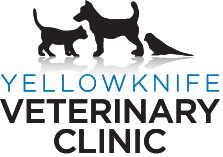Library
-
Arsenic poisoning is the accidental ingestion, skin contact, or inhalation of products containing a toxic dose of arsenic. The clinical signs of sudden arsenic poisoning can vary depending on the dose. Supportive therapy is a crucial part of treating arsenic poisoning. Aggressive fluid therapy and rehydration is necessary and helps the body to remove arsenic from the body.
-
This handout discusses the pros and cons of feeding a raw food diet to your dog. Topics included are nutritional imbalances, potential bacterial contamination, the risk of foodborne illnesses involving both you and your pet, and other concerns that may arise from feeding a raw food diet.
-
There are many environmentally friendly ways that owners can care for their pets. Waste disposal can involve biodegradable or compostable bags or careful composting. Cat litter can be transitioned to recycled newspaper or sawdust pellets. Any toys, beds, houses and other accessories can be biodegradable and/or recycled such as cotton or rubber. Cats should be kept indoors to reduce their impact on the ecology of their surrounding environment. A nutritionally adequate diet composed of organic food can be provided.
-
When birds are ill, they will commonly develop a change in their droppings. While not usually specific for any one particular disease, a change in the color, frequency, volume, or character of droppings may indicate a problem that requires immediate veterinary attention.
-
An unplanned weight loss of more than 10% of a dog’s body weight is considered abnormal. Weight loss occurs because calories absorbed from the diet do not meet the calories being used by the body. This can occur due to many factors including excessive cold or physical activity, disease states that heighten the metabolic rate, insufficient calories or poor diet, inability to ingest the diet, inability to digest and/or absorb the nutrients in the diet, and loss of nutrients from vomiting, diarrhea, or polyuria. As well as a thorough history and physical exam, testing such as bloodwork, urinalysis, and imaging may be needed to determine the underlying cause in order to institute targeted treatment.
-
An abscess is a “pocket of pus” located somewhere in the body. Abscesses can be located superficially or deep within the body tissues. Typically, an abscess appears suddenly as a painful swelling (if it is not located inside a body cavity or deep within tissue). A cat with an abscess will often have a fever, even if the abscess has ruptured and drained to the outside of the body. One of the most common causes is a bite from another animal. Abscess treatment depends on the location and the severity of the infection. Most abscesses are treated on an outpatient basis, rather than in the hospital. Appropriate antibiotic therapy is a critical component of the successful treatment of abscesses, no matter the location. It is also important to ensure adequate pain relief during treatment of an abscess. Delayed or inadequate treatment may lead to chronically draining tracts in the tissue or even to organ system compromise, so it is important to follow all treatment instructions from your veterinarian.
-
Abscesses are firm or compressible, often painful swellings that contain pus. They can develop in many areas of the body including around tooth roots, anal glands, under the skin, or in the liver. Abscesses are caused by the introduction of bacteria through wounds, injuries, or bloodborne in the case of an internal organ abscess. Any area of the body that becomes infected can eventually cause an abscess to form such as anal gland abscess, bite wound abscess, prostatic abscess, or brain abscess from inner ear or sinus infection. Treatment depends on severity and location and usually involves removal of the pus either through drainage or surgical removal, the use of antibiotics based on the type of bacteria and location of the abscess, and pain control medications. Monitoring after initiating treatment includes watching the site for additional drainage if the abscess was superficial or monitoring the pet for improvement of clinical signs. Delayed treatment of abscesses can lead to chronic draining tracts or worse.
-
Acepromazine is a sedative/tranquilizer used primarily in cats and dogs as a pre-medication for anesthesia or for chemical restraint. It is given by injection in the clinic or by mouth in the form of a tablet. The most common side effect is low blood pressure. Acepromazine should not be used in conjunction with certain toxicities, or in pets with heart disease, low blood pressure. It should be used cautiously in pets with mild liver or heart disease, clotting problems, or in pregnant, debilitated, or young animals. If a negative reaction occurs, call your veterinary office.
-
Acetaminophen (Tylenol®, Paracetamol, APAP, N-acetyl-p-aminophenol) is a pain relief and fever-reducing medicine people use for many types of pain. Acetaminophen is available in many forms including tablets, capsules, gel caps, melt away tablets, rectal suppositories, and liquids. Acetaminophen is often found in homes with pets. Poisoning may happen when pets get into the owner’s medications.
-
Acetaminophen is a medication that is used to treat fever and/or pain in humans. Cats have a genetic deficiency in a metabolic pathway in the liver that makes cats vulnerable to acetaminophen toxicity.
